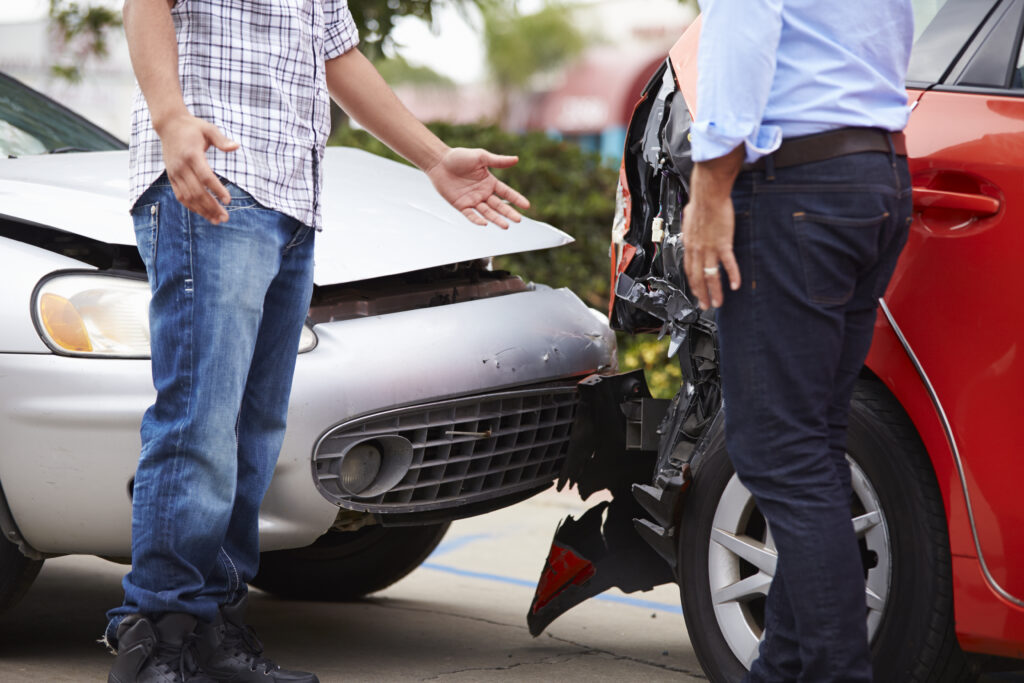
Being at fault in a car accident can feel overwhelming, but understanding what to expect helps you take control of the situation. What happens if I’m at fault in a car accident in California? Fault determines how insurance claims are handled and whether you are financially responsible for damages. If you caused the collision, you are legally obligated to cover the other party’s property damage, medical expenses, and related costs up to the limits of your insurance policy.
California’s comparative negligence law also allows for shared fault, meaning both drivers may be held partially responsible based on their contributions to the accident. This system directly impacts the amount of compensation the at-fault party owes. Knowing your rights and responsibilities ensures you address the situation responsibly and protect yourself from unnecessary complications.
How Do Adjusters Determine Who Is at Fault?
Generally, insurance adjusters determine who is at fault in a car accident. After the crash, they analyze the evidence to assign responsibility. Adjusters review police reports, witness statements, photographs, and even repair estimates to piece together what happened.
Location of the Damage
For a car accident, determining fault by the location of the damage is possible. In fact, the location of the damage on each vehicle is often a key factor.
The damage to your car and the other vehicle provides essential clues about how the accident happened. For instance, rear-end damage indicates that the following driver failed to maintain a safe distance. Similarly, side-impact damage may indicate a failure to yield, while front-end damage could suggest speeding or running a red light.
Other Factors That Help Adjusters Determine Fault
Although the location of damage is a significant factor, it is not the only evidence considered. Other details, such as skid marks, debris patterns, and video footage, may confirm or contradict the story told by the damage alone. This is why thoroughly documenting the accident scene is so important.
For example, damage to the rear of a car typically blames the driver who struck the car in front of them, as rear-end collisions usually result from following too closely or failing to brake in time. However, adjusters also consider other contributing factors, such as poor weather conditions, road hazards, or mechanical failures. They should piece together all the evidence before determining fault.
What If I Disagree with the Adjuster’s Findings of Fault?
If you disagree with their decision, you can appeal through your insurance company. Alternatively, you can hire an attorney. If your attorney believes they have ample evidence that contradicts the insurer’s findings, they can bring the case to court and let a judge or jury decide.
Insurance Requirements
California law requires drivers to maintain liability insurance to cover damages in the event of an accident. Failure to carry insurance can result in fines, license suspension, and personal financial liability for any damages caused.
If you’re found at fault in a car accident, your insurance company will manage claims from the other party. These claims typically cover property damage, medical expenses, and other related costs.
California law requires all drivers to carry liability insurance. For policies issued or renewed before January 1, 2025, the minimum coverage limits are:
- Bodily injury—$15,000 per person;
- Bodily injury involving two or more people—$30,000 per accident; and
- Property damage—$5,000.
For policies issued or renewed on or after January 1, 2025, the updated minimums increase to:
- Bodily injury—$30,000 per person;
- Bodily injury involving two or more people—$60,000 per accident; and
- Property damage—$15,000.
These limits, outlined under California Vehicle Code § 16056, help to ensure that liable parties have enough coverage to adequately compensate for the harm they cause. However, if the damages exceed your policy’s limits, you may be personally liable for the remaining costs. The other party may pursue legal action to recover the difference in such situations.
And remember, your insurance premiums are likely to increase following the accident. It’s crucial to understand your policy’s coverage and seek legal advice if needed to avoid unnecessary financial strain if you’re found to be at fault for a crash.
Understanding California’s Comparative Negligence Law
California’s pure comparative negligence rule, established under Civil Code § 1714, allows liability to be divided based on each party’s contribution to the accident. For instance, if one driver is 20% at fault and the other is 80% at fault, the compensation awarded to the less-responsible party will be reduced by 20%.
This system ensures that even partially at-fault drivers can recover damages, but it also means your financial liability increases as your percentage of fault increases. In multi-vehicle collisions, determining fault becomes more complex, as liability must be divided among all involved parties. For this reason, collecting clear evidence and working with an experienced attorney can help minimize your share of fault and reduce your financial responsibility.
Steps to Take After Being Found at Fault
Taking the proper steps after being found at fault in a car accident can help protect your rights and avoid additional complications. Contact your insurance company to report the accident and provide all requested information. Delays in reporting could result in denied claims.
Next, document the accident scene thoroughly. Take photos of all vehicles, road conditions, and any visible injuries. This evidence can be critical if you need to dispute liability later. Review your insurance policy to understand your coverage limits and whether additional policies, like umbrella insurance, might apply.
Seek legal advice if you disagree with the fault determination or face a lawsuit for damages exceeding your policy limits. A skilled attorney can challenge the findings, negotiate on your behalf, and ensure you are not unfairly penalized.
By taking these proactive steps, you can manage the aftermath of an at-fault accident more effectively.
Are You Afraid You Were to Blame for a Recent Car Accident? You May Be Surprised
If you were recently involved in a car accident and the insurance company is claiming you were at fault, you shouldn’t take their word for it. Consult an experienced California personal injury lawyer at the Law Offices of Ali Yousefi, P.C. We have extensive experience helping clients involved in car accidents recover compensation for their accident-related expenses, including medical bills, lost wages, property damage, and pain and suffering. But we know both sides of the issue, and if you were found at fault and question or dispute the finding in whole or in part, we can help. To learn more, call or contact us online to schedule a free consultation.



